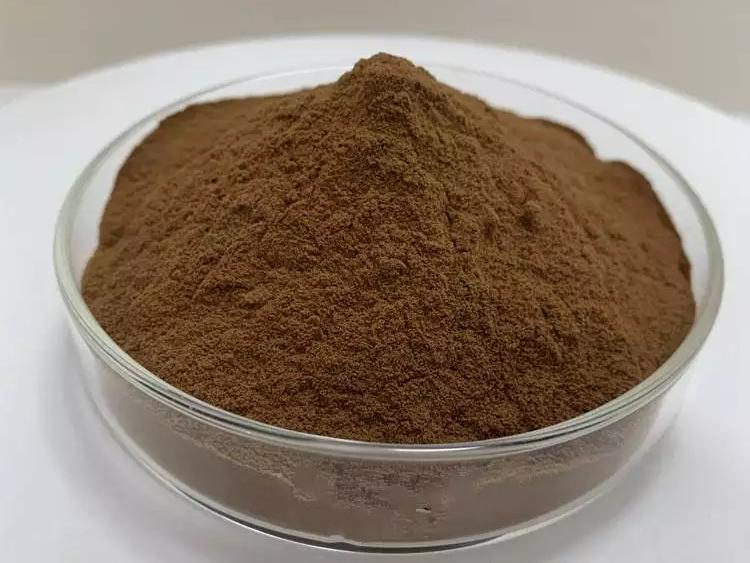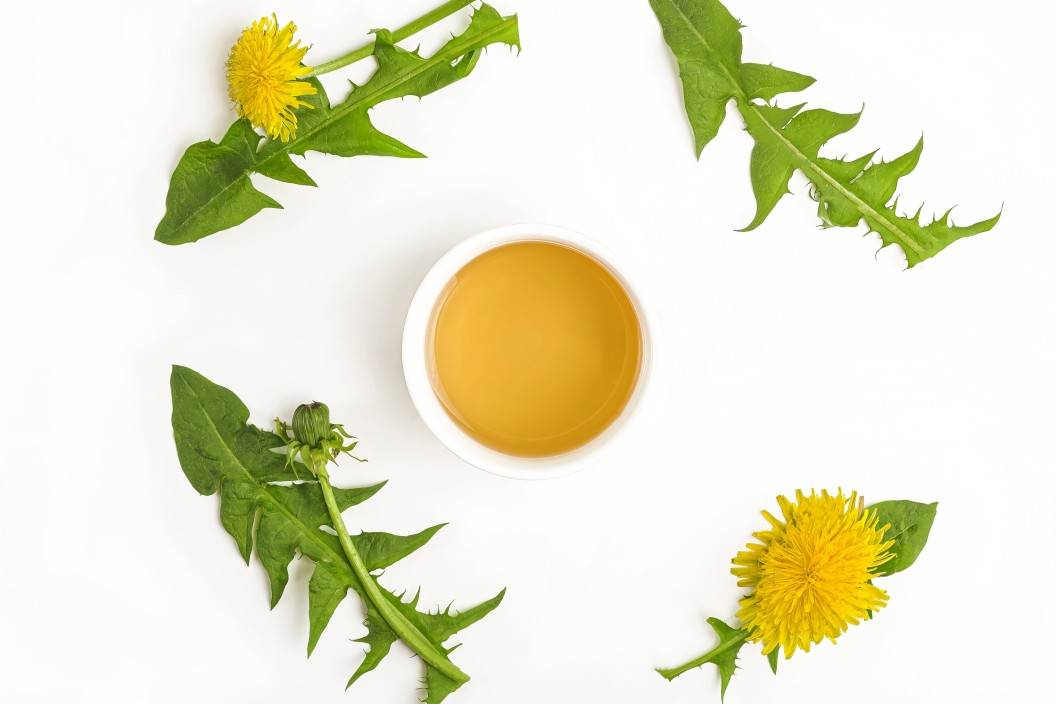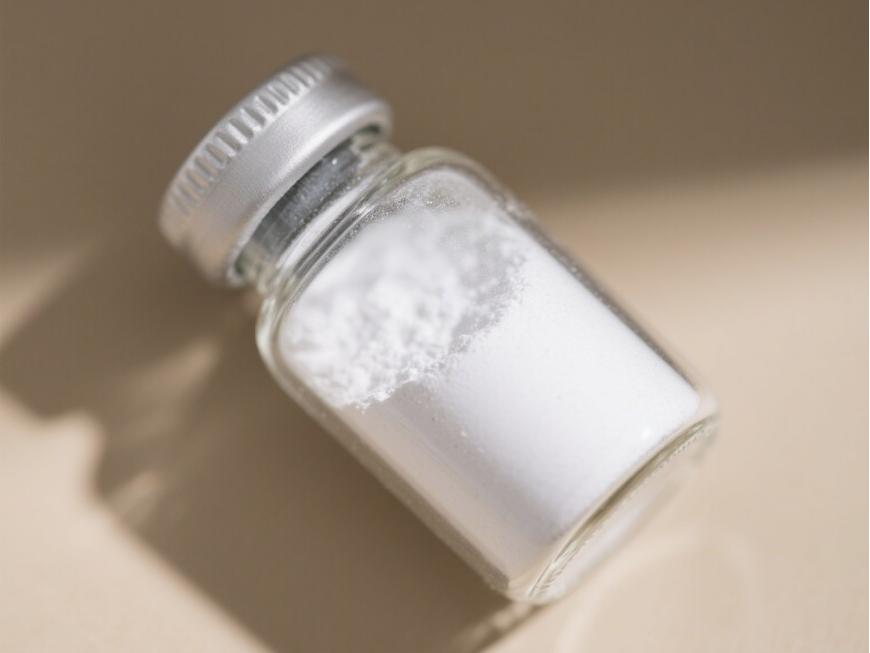What Is the Use of Dandelion Extract in Animal Nutrition?
Dandelion (Taraxacum mongolicum Hand. Mazz.) , also known as yellow flowered ground elder (Ren Hanshu et al., 2022), is a perennial herb in the Asteraceae family. It is widely used as a wild vegetable and in traditional Chinese medicine, and has now been included in the list of medicinal substances with similar nutritional properties by the National Health Commission (Shi Guohui et al., 2017). Dandelion has strong growth and reproduction capabilities and is resource-rich. Dandelion is bitter, sweet and slightly cold. Studies have shown that dandelion extract mainly contains bioactive ingredients such as flavonoids, polysaccharides, phenolic acids, etc., which have pharmacological effects such as antibacterial, antioxidant, liver protection and choleretic (Zhang Zhenhua et al., 2022).
In modern farming, bacterial and viral infections are always one of the causes of animal death. Currently, the addition of antibiotics to feed has been completely banned, and many Chinese herbal medicines have good antibacterial and antiviral effects without causing animals to become tolerant. Dandelion, as a feed additive, can improve the biological performance of livestock and poultry, and has broad application prospects (Li Zhaojia et al., 2022; Li Aike et al., 2020). This article studies the extraction of effective components of dandelion, their biological functions and their application in animal production, providing a reference for the high value-added utilization of dandelion.

1 Main effective components of dandelion
At present, the extraction of effective components of dandelion mainly focuses on compounds such as polysaccharides, flavonoids, terpenes and phenolic acids.
1.1 Polysaccharide components and their extraction methods
Polysaccharides are one of the main effective components of dandelion extract. They are a class of biological macromolecules widely found in nature and have biological activities such as anti-inflammatory, antibacterial, hypoglycemic and antioxidant (Meng Qinglong et al., 2020). Currently, the methods used to extract dandelion polysaccharides include enzymatic extraction, hot water extraction, ultrasonic-assisted extraction, microwave-assisted extraction, etc. Different extraction methods have different polysaccharide extraction rates (Table 1). As can be seen from Table 1, the microwave-assisted extraction method has the highest extraction rate, but the microwave method has high equipment requirements and is currently mainly used in laboratory-scale research and is not suitable for large-scale industrial production. The hot water extraction method is suitable for large-scale production, but the disadvantage is that the extraction time is long and the efficiency is low. Enzyme extraction is more stringent in terms of temperature requirements and is also more expensive.
1.2 Flavonoids and their extraction methods
Flavonoids are found in the above-ground and underground parts of dandelions, with the above-ground flowers being richer in flavonoids (Sun Shanshan et al., 2018). Flavonoids have anti-cancer, antioxidant, liver-protecting, choleretic and immunity-enhancing effects (Tang Chunli et al., 2021). Currently, commonly used methods for extracting dandelion flavonoids include ultrasonic-assisted extraction and microwave-assisted extraction. Different extraction methods have different flavonoid extraction rates (Table 2). Overall, the microwave-assisted extraction method has the highest extraction rate and the shortest time, and can be used as the optimal method for extracting total dandelion flavonoids.
1.3 Phenolic acids and their extraction methods
More than 30 phenolic acids have been isolated from dandelion, mainly including chlorogenic acid, caffeic acid, p-hydroxybenzoic acid, coumarin, etc., among which the phenolic acid content in dandelion leaves is much higher than that in the roots (Li Lingna, 2019). Phenolic acids have antibacterial, antioxidant, hypolipidemic, anticancer, and anti-inflammatory effects (Zhang et al., 2018). The current research on the extraction of phenolic acids from dandelion includes ultrasonic extraction, ethanol reflux, and other methods. Different extraction methods have different phenolic acid extraction rates (Table 3). At present, the extraction of phenolic acid components is mainly concentrated on chlorogenic acid, and other components are rarely involved.
1.4 Other compounds and their extraction methods
Sterol compounds are widely found in all parts of dandelion, especially in pollen (Chen Ruijun et al., 2021). Dong Changying et al. (2011) used reflux extraction to extract crude sterols from dandelion, with an extraction rate of 8.761%. Cui Yanping et al. (2021) used an ultrasonic microwave method to extract polyphenols from dandelion, and the polyphenol extraction rate was 2.96%. At present, research on the extraction of effective components of dandelion mainly focuses on polysaccharides, flavonoids and phenolic acids, while there is very little research on its terpene polyphenols and other components.
2 Biological function research on the effective components of dandelion
2.1 Antioxidant effect
Dandelion is rich in flavonoid polysaccharide volatile oil and phenolic substances, which have a good antioxidant effect. It can reduce body damage by scavenging free radicals. Zhang Zhi et al. (2018) showed in an in vitro study that dandelion total flavonoids have a good scavenging rate for DPPH, and the scavenging rate is proportional to the mass concentration of dandelion total flavonoids. Cui Yanping et al. (2021) found that dandelion polyphenol extract has a good scavenging rate for both DPPH free radicals and ABTS free radicals, but as the concentration of the polyphenol extract increases, the rate of scavenging ABTS free radicals is faster than that of DPPH.
Kamal et al. (2022) found that dandelion essential oil can protect the liver and kidneys of mice from acetaminophen-induced oxidative stress damage by enhancing catalase superoxide dismutase (SOD) and glutathione and reducing malondialdehyde levels. A study by Kang Wenjin et al. (2020) found that dandelion polysaccharides can upregulate the relative expression of antioxidant stress factors Cu-Zn SOD Mn-SOD GPX-1 and GPX-4 mRNA, increase the activity of antioxidant enzymes, and thus remove the damage to the body caused by free radical ions.
2.2 Antibacterial effect
Dandelion has a broad-spectrum antibacterial effect, but the antibacterial effect of different parts varies. Pang Jiwei et al. (2021) showed that the antibacterial effect of the water extract of the whole dandelion herb at the same concentration was better than that of the root water extract, and the antibacterial effect on Staphylococcus aureus was stronger than that on Escherichia coli. Yang Qian et al. (2019) studied the effects of alcohol extracts from different parts of dandelion on two common cariogenic bacteria. Among them, the stem had the best inhibitory effect on Streptococcus mutans, while the flowers and whole grass had the strongest inhibitory effect on Actinomyces viscosus.

Yang Xiaojie et al. (2012) showed that dandelion polysaccharides have different degrees of inhibitory effects on bacteria and fungi, and the inhibitory effect on bacteria is stronger than that on fungi. The antibacterial effect of dandelion extract using different solvents is also different. The dandelion alcohol extract has a strong inhibitory effect on Staphylococcus aureus, Escherichia coli and Shigella dysenteriae, but has no significant inhibitory effect on yeast (Jia Meizhen and Feng Xin, 2013). Qiu Zhihong et al. (2018) showed that dandelion water extract has varying degrees of inhibitory effects on clinical pathogenic bacteria (Staphylococcus aureus, Acinetobacter baumannii, Pseudomonas aeruginosa, Escherichia coli, etc.).
2.3 Anti-inflammatory effect
Dandelion has a good anti-inflammatory effect, which is related to its rich content of triterpenes, flavonoids, sterols, polysaccharides and other ingredients. Research by Che Lu (2020) shows that dandelion sterols can reduce the levels of inflammation and oxidative stress in mice with ulcerative colitis, and can inhibit apoptosis of mouse colonic epithelial cells. Dandelion water extract has a therapeutic effect on ethanol-trinitrobenzene sulfonic acid-induced ulcerative colitis, and the mechanism may be to reduce the body's inflammatory response by regulating the secretion of inflammatory cytokines and increase the expression of pro-repair factors (Mao Yeqin et al., 2022). Chu Aijing et al. (2019) found that dandelion extract can reduce the pathological changes of endotoxin-induced mastitis in mice by regulating the NF-κB and MAPKs signaling pathways. Zhu Zhengwang et al. (2021) showed that dandelion total flavonoids can reduce liver damage caused by CCl 4 in rats by increasing SODGSH activity, lowering the levels of ASTALT TBILALP in rat serum, and reducing the MDA content in the liver.
2.4 Hypoglycemic effect
The phenolic acids and polysaccharides in dandelion have a hypoglycemic effect. Yin Jiale (2021) found that chlorogenic acid in dandelion leaves has a high binding capacity with sodium cholate by simulating the gastrointestinal environment, and has a significant hypolipidemic function. Guo Huijing et al. (2021) used an ultrasound-assisted method to extract dandelion polysaccharides, and used different volume fractions of ethanol for alcohol precipitation. It was found that the polysaccharides obtained at different alcohol precipitation concentrations all had a certain inhibitory effect on the glucoamylase, but the polysaccharides obtained by alcohol precipitation with 80% ethanol had the strongest inhibitory effect on the glucoamylase, and its IC50 was 0.56 mg/mL. Guo et al. (2019) showed that Dandelion polysaccharides have strong inhibitory effects on α-amylase and α-glucosidase in vitro, and exhibit good hypoglycemic activity, which is concentration-dependent. El-Nagar et al. (2022) found that dandelion seed extract can reduce the pathophysiological parameters of elevated cholesterol and improve steatosis inflammation and fibrosis.
2.5 Antitumor effect
From the current research, the anticancer effect of dandelion is mainly in breast cancer, gastric cancer, and ovarian cancer. Liu Siji (2022) found that dandelion phenolic acids can inhibit the proliferation and migration of gastric cancer MGC803 and liver cancer HepG2 cells, but the inhibition of migration in gastric cancer MGC803 is more obvious. Dandelion flavonoids can inhibit the proliferation of breast cancer MCF-7 cells and promote their apoptosis, possibly by regulating the expression of P53Bax and Bcl-2 (Sun Yumin, 2020). Wang et al. (2019) demonstrated that dandelion extract can interfere with glycerophospholipid and unsaturated fatty acid metabolism by inhibiting CHKA/P13K/AKT/FADS2, resulting in the death of triple-negative breast cancer cells. Menke et al. (2019) found that dandelion extract inhibited the cell viability of ovarian cancer cells, migrated mitochondrial integrity and induced apoptosis. Choi et al. (2009) studied the ethanol extract of dandelion flowers and found that it promoted apoptosis in ovarian cancer SK-OV-3 cells. The above study shows that dandelion has a good anti-tumor effect, providing a basis for the development of anti-tumor drugs.
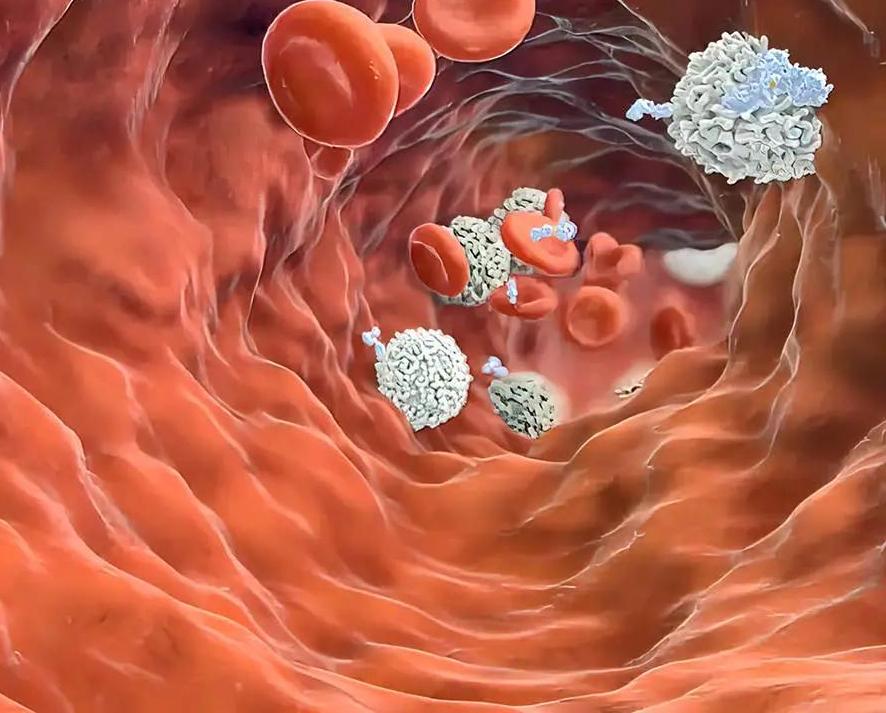
3 Application of dandelion in animal production
3.1 Application in chicken production
Chicken meat and eggs are very important sources of protein in people's daily diet, and their quality is of increasing concern. Current research has found that the factors affecting the quality of chicken meat and eggs mainly include oxidative stress, disease resistance, apparent metabolic rate, and immune function. Yao Dongyun (2020) found that as a daily health care measure, adding 500 to 1000 mg/kg dandelion crude extract to chicken feed can increase the average egg weight of eggs, reduce the rate of broken eggs and breakage, and at the same time alleviate the oxidative stress that occurs during the breeding process. Li, Zhao Jia, et al. (2022) research shows that adding 1% dandelion to the feed can reduce the cholesterol content in eggs and increase the lecithin content; enhance antioxidant capacity and enhance the protective effect on the liver. Wang Shuyan et al. (2021) showed that adding dandelion extract to drinking water can improve the thymus index, spleen index and post-immunization antibody levels of three yellow chickens, and enhance their resistance to avian influenza.
Mao et al. (2022) showed that adding 500 mg/kg dandelion to the diet can improve the growth performance of broilers by improving intestinal barrier function. Dandelion can be added to the diet as an antibiotic alternative to improve production in the poultry industry. Wang et al. (2018) found that adding 3–5 g/L dandelion water extract to the water significantly increased the total serum IgG antioxidant capacity (T-AOC), superoxide dismutase (SOD), and glutathione peroxidase (GSH-Px) levels in chickens. This may be related to the main active ingredient in dandelion, flavonoids, which have good antioxidant properties. They can reduce oxidative stress by scavenging free radicals and enhance the body's antioxidant capacity (He Jiayi et al., 2022).
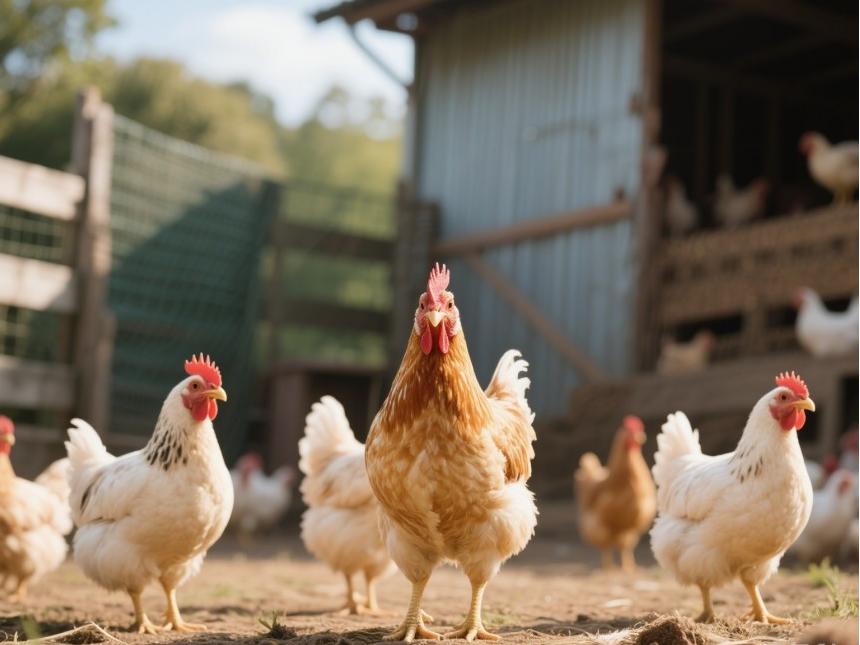
3.2 Application in pig production
Du Xuelin (2021) showed that adding 1% dandelion dry powder to the diet of weaned pigs can significantly increase the daily weight gain of pigs and improve their disease resistance. Yu Wenhui et al. (2015) and Wu Suhao et al. (2012) showed that dandelion has an inhibitory effect on Streptococcus suis in vitro and can inhibit the formation of Streptococcus suis biofilms. The main component that exerts this inhibitory effect is chlorogenic acid. Li Yurong (2019) found that adding 500 g/t dried dandelion powder to the feed of fattening pigs can reduce the diarrhea rate, lower the content of triglycerides and total cholesterol, and improve the growth performance and quality of pigs.
Wang et al. (2019) showed that adding 6 g/L dandelion water extract to pig drinking water increased the serum anti-inflammatory cytokine IL-10 and decreased the pro-inflammatory cytokines IL-8, IL-22, and TNF-α, thereby reducing intestinal inflammatory damage in weaned pigs. Zhao et al. (2019) added dandelion root extract (CHE) to the feed of weaned pigs, which reduced the incidence of diarrhea in pigs. In addition, it also improved the concentration of SCFAs in pig feces and immune function, and shaped the fecal microbiota of weaned pigs.
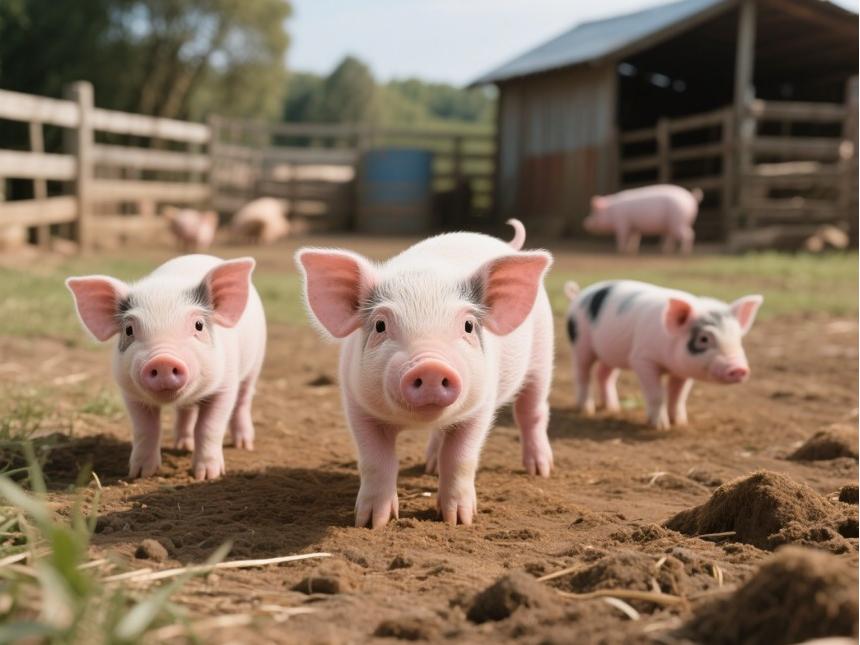
3.3 Application in cattle production
The rumen is an important digestive organ of ruminants, rich in microorganisms, and is an important guarantee of ruminant health. With the rapid development of China's animal husbandry, feeders often add high-quality feed to maintain high milk production in dairy cows, but long-term use can lead to abnormal rumen metabolism and cause mastitis and digestive diseases in dairy cows. Sun Yawang (2021) found that adding dandelion extract to high-concentrate feed can enhance the antioxidant capacity of the mammary gland through Nrf2 regulation factors, increase the pH in the rumen, and reduce the production of lipopolysaccharides.
Wang et al. (2022) found that vomitoxin can promote the expression of BAXCaspase-3 and inhibit the expression of Bcl-2 in bovine milk epithelial cells, thereby accelerating apoptosis. Dandelion sterols can antagonize vomitoxin and inhibit apoptosis. Sun et al. (2015) found that a water extract of dandelion can be used to treat mastitis in cows instead of antibiotics. Cho et al. (2015) found that adding dandelion to the feed of cows can increase the milk protein milk urea nitrogen (MUN) and free fatty acid (FFA) content in milk, thereby improving the production performance of cows. Shi Chengyu et al. (2019) found that dandelion can interfere with the reproduction of Streptococcus mutans and promote the remineralization of teeth. The mechanism of action may be the result of the synergistic effect of antibacterial substances in dandelion. Adding 6% dandelion to the feed can help improve the blood metabolic indicators of beef cattle, increase the serum albumin content, increase the weight gain of grazing cattle, and improve their immune performance.
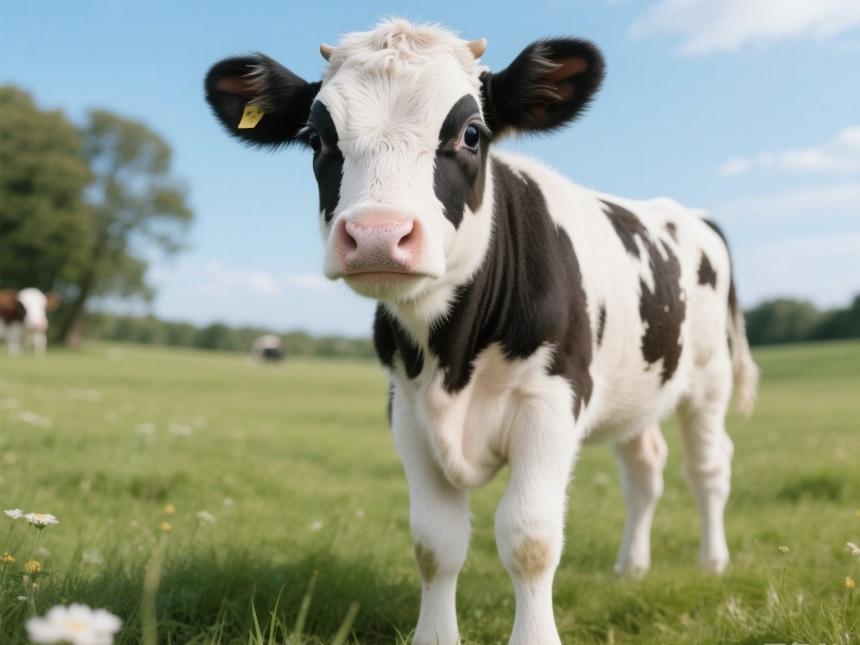
3.4 Application in fish production
Adding dandelion extract to fish feed can not only promote fish growth and improve meat quality, but also enhance fish immunity. Li Meiju (2020) found that adding 0.4% dandelion extract to tilapia feed can increase the average final weight of tilapia, reduce fattening and mesenteric fat index, and at the same time affect the blood biochemical indicators of tilapia (serum globulin concentration increases, while triglyceride and cholesterol concentrations decrease). Peng Xiaoyu et al. (2010) found that adding 2% dandelion extract to crucian carp feed can promote the growth of crucian carp, improve meat quality, enhance digestive enzyme activity and immunity. Salem et al. (2021) found that the use of dandelion at a rate of 0.5% in trout farming will help prevent oxidative stress and positively affect the feed conversion rate of fish. Li et al. (2022) showed that dandelion extract can reduce lipopolysaccharide (LPS)-induced inflammation in RAW264.7 macrophages and CuSO4-induced inflammation in zebrafish larvae. Xue et al. (2022) added 5.42% dandelion extract to the feed of carp, which improved the growth performance, non-specific immunity and antioxidant capacity of carp. In summary, dandelion extract, as a low-cost feed additive with good biological activity, can be reasonably applied in fish farming.
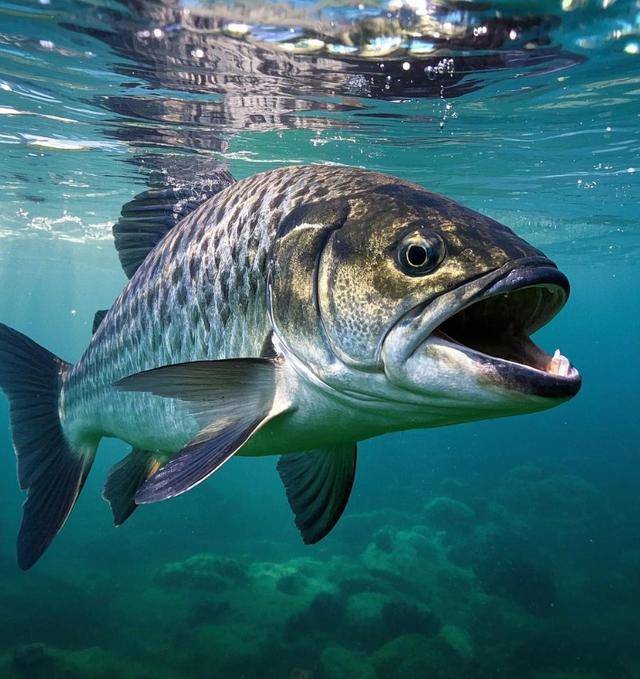
4 Conclusion
Dandelion is widely distributed, inexpensive, and studies at home and abroad have confirmed that dandelion has antibacterial, growth-promoting, and antioxidant effects, and can be used as a new feed additive in animal production. However, there is not much research on the mechanism of action and the extraction of effective ingredients in dandelion in animals, especially sterol compounds, which require further in-depth research. In addition, the extraction process of some compounds is too complicated and the extraction cost is high, which is not suitable for large-scale extraction and production. Only by developing an extraction method that can be mass-produced and popularized can the wide application of dandelion in animal production be ensured.
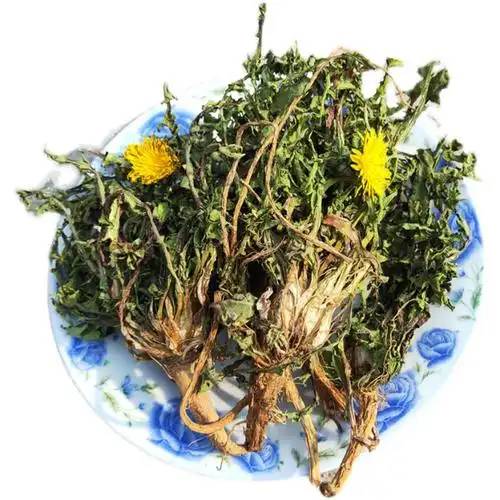
References
[1] Che Lu. Protective effect and mechanism of dandelion sterols on ulcerative colitis [D]. Zhengzhou: Zhengzhou University, 2020.
[2] Chen Ruijun, Wang Qiuyuan, La Xiaojin, et al. Research progress of dandelion medicine [J]. Modern Journal of Integrated Traditional and Western Medicine, 2021, 30(5): 563-567.
[3] Chu Aijing, Cheng Xufeng, Zhao Huiduo, et al. Anti-inflammatory effect and mechanism of dandelion sterols on lipopolysaccharide-induced mastitis in rats [J]. Journal of Southeast University (Medical Sciences), 2019, 38 (2): 303-308.
[4] Cui Yanping, Nie Wei, Chi Xiaojun, et al. Optimization of dandelion polyphenol extraction process and study of its antioxidant activity [J]. Anhui Agricultural Science, 2021, 49(8): 175-180.
[5] Dong Changying, Wu Junbo. Extraction of dandelion sterols and study of their anti-inflammatory activity [J]. Heilongjiang Animal Husbandry and Veterinary Medicine, 2011, 5: 133-134.
[6] Du Xuelin. Effect of dandelion added to feed on the disease resistance of pigs [J]. Gansu Animal Husbandry and Veterinary Medicine, 2021, 51(8): 45-46.
[7] Feng Xiuyu, Li Ping, Zhu Jingjing, et al. Research on the process optimization of extracting chlorogenic acid from dandelion by ultrasonic method [J]. Preservation and Processing, 2019, 19(6): 112-116.
[8] Guo Huijing, Chen Guogang, Zhao Zhiyong. Study on the graded alcohol precipitation of dandelion polysaccharides and its hypoglycemic and antioxidant activities [J]. Processing of Agricultural Products, 2021, 07: 1-5.
[9] Guo Xijuan, Ma Ping, Liu Yuanyang. Research on the optimization of microwave-assisted extraction of dandelion polysaccharides by response surface methodology [J]. Journal of Heilongjiang Bayi Agricultural University ,2014 ,26(3) :40 ~ 44.
[10] He Jiayi , Lin Ying , Wang Changkang , et al . Bioactive effects of flavonoids and research progress in livestock and poultry [J]. Feed Industry ,2022 ,43(4) :30 ~ 35.
[11] Jia Meizhen, Feng Xin. Preliminary study on the extraction and antibacterial activity of chlorogenic acid from dandelion [J]. Food Industry, 2013, 34(10): 14-17.
[12] Jin Huirong. Extraction and purification of chlorogenic acid from dandelion and evaluation of its main functions [D]. Harbin: Harbin University of Commerce, 2018.
[13] Kang Wenjin, Xu Xingjun, Liu Jiaoren, et al. Effect of dandelion polysaccharides on the activity of antioxidant enzymes and the expression of related genes in mice [J]. Journal of Animal Nutrition, 2020, 32(12): 5910 ~ 5915.
[14] Li Aike, Wang Weiwei, Wang Yongwei, et al. Research progress on biological feed and its alternative and reduced antibiotic use technology [J]. Journal of Animal Nutrition, 2020, 32(10): 4793 ~ 4806.
[15] Li Linna. Research on the extraction of dandelion root total flavonoids by ultrasonic compound enzyme method [J]. Cereals, Oils and Fats, 2019, 32(11): 93-96.
[16] Li Meiju. Effect of dandelion extract added to the feed on the growth performance, body shape index and blood biochemical index of tilapia [J]. China Feed, 2020, 11: 84-86.
[17] Li Yurong. Study on the effect of adding dandelion powder to the feed on the growth performance and biochemical indicators of fattening pigs [J]. Pig Raising ,2019 ,06 :21 ~ 22.
[18] Li Zhaojia, Meng Ran, Feng Wei, et al. Effect of dandelion added to feed on the production performance, nutritional quality of eggs, serum antioxidant capacity and liver of laying hens [J]. Feed Research ,2022 ,45 (3) :48 ~ 52.
[19] Liu Shanshan , Liu Yaqiong , Zhang Qi ,et al . Optimization of the double enzyme extraction process of dandelion root polysaccharides and its antioxidant properties[J]. Journal of Food Science and Technology ,2019 ,37(6) :108 ~ 115.
[20] Liu S J. Study on the extraction of dandelion phenolic acids and their inhibition of gastric cancer MGC 803 and liver cancer HepG 2 cell proliferation [D]. Changchun: Jilin University, 2022.
[21] Mao Y Q, Chen L, Wu Y, et al. The effect of dandelion water extract on ulcerative colitis in rats [J]. Traditional Chinese Medicine ,2022 ,44(3) :752 ~ 757.
[22] Meng QL, Jin S, Liu YJ, et al. Research progress on the pharmacological effects of plant polysaccharides [J]. Food Industry Science and Technology ,2020 ,41(11) :335 ~ 341.
[23] Pang J W, Cui P C, Feng Y, et al. Study on the antibacterial effect of dandelion extracts from different parts and the development of oral liquid [J]. Genomics and Applied Biology, 2021, 40(1): 414-420.
[24] Peng D Q. Research on the chemical composition of dandelion roots [D]. Qiqihar: Qiqihar University, 2012.
[25] Peng Xiaoyu, Shen Minghao. Effects of dandelion water extract on growth, body composition, digestive enzymes and immune system of common carp[J]. Chinese Journal of Animal Science and Veterinary Medicine, 2010, 37(5): 13-17.
[26] Qiu Zhihong, Zhang Caihong. Study on the antibacterial effect of dandelion water extract on clinically drug-resistant bacteria in vitro[J]. Journal of Clinical Rational Drug Use ,2018 ,11(35) :125 ~ 126. [27] Ren Hanshu, Zhu Wenqing, Zheng Yuanyuan, et al. Research progress on functional components and biological activities of dandelion [J]. Food and Drugs ,2022 ,24(2) :193 ~ 201.
[28] Shi Chengyu, Shi Shaofang, Yang Qian, et al. Effect of dandelion extract on remineralization of bovine incisor root surface caries [J]. Journal of Dali University, 2019, 4(4): 22-25.
[29] Shi Guohui, Chen Yuancai, Wang Xude, et al. Research progress on the anti-tumor activity and mechanism of dandelion, a medicinal food homology [J]. Journal of Shenyang Pharmaceutical University, 2017, 34(9): 858-862.
[30] Sun Shanshan, Zhang Qian, Ding Lin, et al. Determination of total flavonoid content in dandelion and its effect on the immune function of mouse body fluids [J]. Journal of Jining Medical College, 2018, 41(4): 235-237.
[31] Sun Yawang. Lipopolysaccharide causes oxidative stress damage in the mammary gland and body of dairy cows and the blocking effect of dandelion extract on it [D]. Chongqing: Southwest University, 2021.
[32] Sun Yumin. The effect of dandelion flavonoids on the proliferation and apoptosis of human breast cancer MCF-7 cells [D]. Xining: Qinghai University, 2020.
[33] Tang Chunli, Wei Jiangcun, Teng Hongli, et al. Research progress on the anti-inflammatory activity and mechanism of action of flavonoids [J]. Chinese Journal of Traditional Chinese Medicine, 2021, 39(4): 154-159.
[34] Wang Junxiong. Research on the effect of dandelion sterols in alleviating damage to bovine mammary epithelial cells caused by deoxynivalenol[D]. Changchun: Jilin University ,2022.
[35] Wang Liu, Liu Xiuling, Wang Xiangguo. Effect of dandelion water extract on diarrhea rate and serum inflammatory factors in weaned piglets[J]. Pig Raising ,2019 ,02 :52 ~ 53.
[36] Wang Liu, Liu Xiuling. Effect of dandelion water extract on immune function and serum antioxidant function of broiler chickens [J]. Feed Research, 2018, 03: 20-23.
[37] Wang Shuyan, Shen Qiancheng. Study on the effect of dandelion extract added to drinking water on the immune function of three yellow chickens [J]. Animal Husbandry and Veterinary Science and Technology Information ,2021 ,05 :21 ~ 22.
[38] Wang Yaru, Li Yaming, Yang Na, et al. Research progress on the chemical composition and pharmacological effects of Taraxacum plants[J]. Specialty Research ,2017 ,39(4) :67 ~ 75.
[39] Wu Suxiao, Xiao Zhengzhong. Observation of the antibacterial effect of dandelion on Streptococcus suis[J]. Jiangsu Agricultural Science ,2012 ,40(3) :183 ~ 184.
[40] Xu Lan, Wang Minghua, Qu Juanjuan, et al. Enzyme hydrolysis method for extracting dandelion polysaccharides[J]. Food Research and Development ,2016 ,37(5) :46 ~ 51.
[41] Xu Shulai, Wang Li, Ren Hongbo, et al. Optimization of the extraction process of dandelion flavonoids and analysis of the main components [J]. Food Industry Science and Technology. 2020, 41(19): 172-178.
[42] Yang Limin, Lv Jinping, Feng Yan. Distribution and extraction of dandelion total flavonoids in a PEG-ammonium sulfate two-phase system [J]. Chemical Industry Progress ,2014 ,33(8) :1992 ~ 1996.
[43] Yang Qian, Zhu Siying, Shi Shaofang, et al. Effect of alcohol extracts from different parts of dandelion on cariogenic bacteria [J]. Journal of Dali University ,2019 ,4(4) :18 ~ 21.
[44] Yang Xiaojie , Zheng Yunji , Li Na , et al . Study on the antibacterial and antioxidant properties of Asian dandelion polysaccharides [J]. Shizhen National Medicine ,2012 ,23(1) :109 ~ 110.
[45] Yao D Y. Effects of dandelion crude extract on the production performance and biochemical indicators of laying hens [J]. Feed Research, 2020, 43(3): 38-40.
[46] Yin J L. Study on the extraction process of chlorogenic acid from dandelion leaves and its in vitro hypolipidemic effect [D]. Changchun: Changchun University of Technology, 2021.
[47] Yu Wenhui, Xu Jing, Wei Qingwei, et al. In vitro intervention of dandelion water extract on Streptococcus suis biofilms[J]. Journal of Animal Science and Veterinary Medicine, 2015, 46(10): 1875-1881.
[48] Zhang Jing, Wen An, Liu Yangyang, et al. Dandelion root polysaccharide extraction and development of dandelion polysaccharide beverage [J]. Agricultural Products Processing, 2018, 1: 13-17.
[49] Zhang Yan, Yu Zhengyong, Geng Funeng, et al. Optimization of the determination method of total phenolic acid in dandelion extract [J]. Food Research and Development, 2018, 39(3): 123-126.
[50] Zhang Zhenhua, Ma Qing, Wang Yanyan, et al. Progress in the basic research of the medicinal substances of dandelion. Chinese Journal of Traditional Chinese Medicine, 2022, 40(11): 148-152.
[51] Zhang Zhi, Liu Yang, Yin Wenzhe, et al. Study on the enzymatic extraction process and antioxidant activity of dandelion total flavonoids [J]. Food and Machinery, 2018, 34(2): 143-148.
[52] Zhu Qingli, Wang Jiayi, He Wang, et al. Study on the extraction process, in vitro antioxidant and antibacterial properties of dandelion total flavonoids [J]. Journal of Jinling Institute of Technology ,2022 ,38(2):86 ~ 92.
[53] Zhu Zhengwang, Fu Shuangnan, Xue Ning, et al. Protective effect of dandelion total flavonoids on CCl4-induced liver damage in rats [J]. Chinese Patent Medicine ,2021 ,44(11) :3680 ~ 3686.
[54] Cho J Y ,Kim E J ,Lee S M.Effects of Dandelion (Taraxzcum coreanum) Supplementation on Milk Yield,Milk Compositions and Blood Characteristics in Lactating Dairy Cows[J].Journal of The Kore- an Society of Grassland and Forage Science ,2015 ,35(3):217 ~ 224.
[55] Choi E J ,Kim G.Dandelion (Taraxacum officinale) Flower Ethanol Extract Inhibits Cell Proliferation and Induces Apoptosis in Human Ovarian Cancer SK-OV-3 Cells [J].Food Sci.Biotechnol , 2009 ,18(2) :552 ~ 555.
[56] El-Nagar D M ,Al-Dahmash B A ,Alkahtani S ,et al.Dandelion (Taraxacum officinale) seeds extract attenuates hypercholesterolemia in swiss albino mice [J].Journal of King Saud University - Science , 2022 ,34(7) :102198.
[57] Guo H ,Zhang W ,Jiang Y ,et al.Physicochemical ,Structural , and Biological Properties of Polysaccharides from Dandelion [J]. Molecules ,2019 ,24(8) :1485.
[58] Kamal F Z ,Lefter R ,Mihai C ,et al.Chemical Composition , Antioxidant and Antiproliferative Activities of Taraxacum officinale Essential Oil[J].Molecules ,2022 ,27(19) :6477.
[59] Li W ,Luo F ,Wu X ,et al.Anti -Inflammatory Effects and Mechanisms of Dandelion in RAW264.7 Macrophages and Zebrafish Larvae[J].Frontiers in Pharmacology ,2022 ,13.
[60] Libo Wang T L F L ,Yang Y Z H W.Ultrasonic-assisted enzy- matic extraction and characterization of polysaccharides from dande- lion (Taraxacum officinale) leaves[J].International Journal of Bio - , 2019 ,126 :846 ~ 856.
[61] Mao J ,Wang Y ,Wang W ,et al.Effects of Taraxacum mon- golicum Hand. -Mazz. (dandelion) on growth performance ,expres- sion of genes coding for tight junction protein and mucin ,microbiota composition and short chain fatty acids in ileum of broiler chickens [J].BMC Veterinary Research ,2022 ,18(1) :180.
[62] Menke K,Schwermer M,Falke K,et al.Taraxacum officinale extract induces antitumorigenic effects in ovarian carcinoma cell lines[J].Euro- pean Journal of Gynaecological Oncology,2019,10(2):107 ~ 112.
[63] Salem M O A ,Salem T A ,Y俟r俟ten zdemir K ,et al.Antioxi- dant enzyme activities and immune responses in rainbow trout (On- chorhynchus mykiss) juveniles fed diets supplemented with dande- lion (Taraxacum officinalis) and lichen (Usnea barbata) extracts [J]. Fish Physiology and Biochemistry ,2021 ,47(4) :1053 ~ 1062.
[64] Shumin S ,Weichang D ,Hansong Y ,et al.Antibacterial activity of aqueous and ethanolic extracts of Portulaca oleracea L.and Taraxacum mongolicum Hand.-Mazz against pathogenic bacteria of cow mastitis[J].Indian Journal of Animal Research ,2015 ,49(6).
[65] Xue S ,Xia B ,Zou Y ,et al.Dandelion extract on growth perfor- mance ,immunity ,stress and infection resistance in common carp [J]. Aquaculture Reports ,2022 ,26 :101330.
[66] Zhao J ,Zhang G ,Zhou X ,et al.Effect of Dandelion root extract on growth performance ,immune function and bacterial community in weaned pigs [J].Food and agricultural immunology ,2019 ,30(1) : 95 ~ 111.


 English
English French
French Spanish
Spanish Russian
Russian Korean
Korean Japanese
Japanese